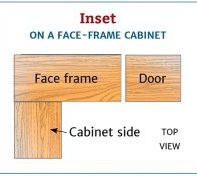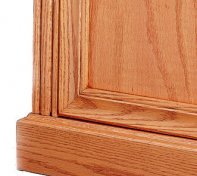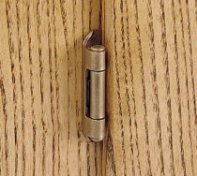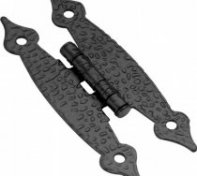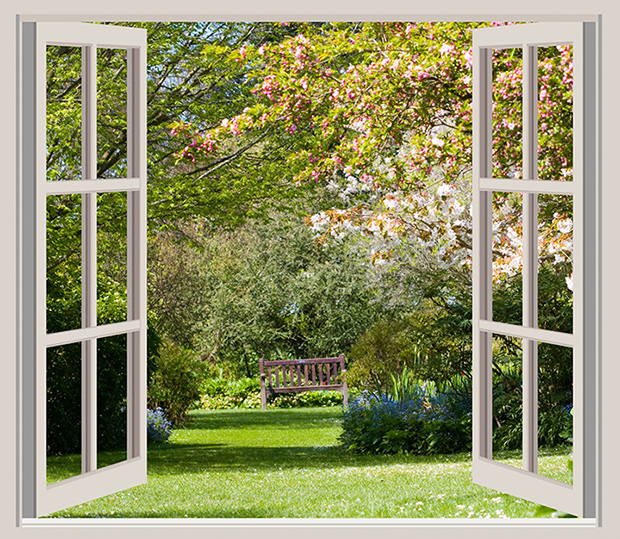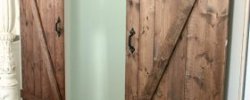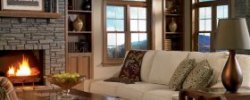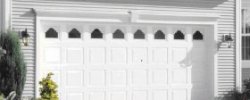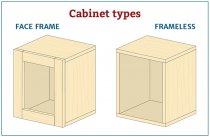
When it comes to cabinets, a lot hinges on the hinges. Their style and functionality have a huge effect on the overall appearance and performance of your cabinets and doors, maybe as much as the choice of wood or finish. The good news is that a wide range of hinge options are available, so there's an excellent chance there's a hinge out there that's right for your application. But with so many choices, how do you find it?
Probably the best place to start is to figure out what type of cabinets and doors you have because that's typically how hinges are broadly categorized.
1. Determine cabinet type
There are two basic types of cabinets (with corresponding hinges):
Face-frame cabinets incorporate a frame (often made from 1-1/2" to 2" wide solid wood) that is attached to the front edges, or face, of the case. Hinges mount to this face frame. This is the most common style in American cabinets.
Frameless cabinets are essentially a four-sided box, typically made from 3/4" thick stock. Hinges mount to the cabinet interior. Frameless cabinets also are sometimes called Euro-style cabinets.
2. Determine door overlay
This has to do with the position of the door in relation to the cabinet opening. The configurations for frameless and face-frame cabinets are slightly different.
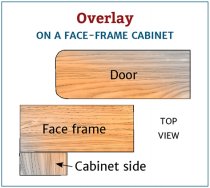 Overlay types for face-frame cabinets
Overlay types for face-frame cabinets
Overlay doors do exactly what the name implies: They cover the cabinet opening completely, overlapping the cabinet case or face frame on all sides.
Inset doors, by contrast, fit entirely within the cabinet opening and sit flush with the cabinet sides or face frames
when in the closed position.
Partial-inset, 3/8" inset or lipped doors overlap the cabinet opening slightly on all sides, but a 3/8" x 3/8" shoulder machined along all edges on the back of the door allows part of the door thickness to sit inside the opening.
Overlay types for frameless cabinets
Full overlay: A full-overlay door covers all or nearly all of the front edge of the cabinet. This overlay type typically is used for doors at the ends of a cabinet.
Half overlay: This overlay type is commonly used in the middle of a run of cabinets where the doors share a single partition wall. This hinge will allow the door to cover half of the partition wall (or approximately 3/8"). Don’t confuse this with 1/2" overlay, which will allow a door to cover up the cabinet or face frame by 1/2".
Inset: As on face-frame cabinets, inset door on frameless cabinets fit within the cabinet opening and sit flush with the front edges of the cabinet.
Decide whether you want to see the hinge
In some applications, the hinges are used to add stylistic detail to cabinetry; in others, visible hinges would detract from the desired effect. There are three basic options:
Concealed hinge: No part of the hinge is visible from the outside of the cabinet when the door is closed. Ideal for modern, minimalist applications in which visible hardware would detract from the design.
Semi-concealed hinge: A hinge that is at least partly visible from the outside of the cabinet when the door is closed. May incorporate details such as a decorative ball tip or finial tip.
Exposed hinge: A hinge that is fully visible on the outside of the cabinet when the doors are closed.
Decide whether you want a traditional hinge or a European hinge
Butt hinge: The quintessential traditional hinge, it’s composed of two pivoting plates whose interlocking fingers form a barrel and are held together by a pin. One plate is attached to the door; the other, to the cabinet. Butt hinges sometimes require a mortise in the door and/or the cabinet to prevent an excessive gap.
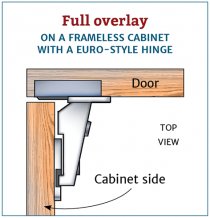 Deluxe (adjustable mount) butt hinge: A butt hinge with elongated mounting slots that allow you to adjust doors horizontally and vertically for a perfect fit.
Deluxe (adjustable mount) butt hinge: A butt hinge with elongated mounting slots that allow you to adjust doors horizontally and vertically for a perfect fit.
Knife hinge: Shaped like scissors. One half of hinge mounts to top edge (or bottom edge) of door. Other half mounts to horizontal cabinet edge directly above (and below) door.
European hinge: A type of concealed hinge especially popular on frameless Euro-style cabinets but also available for face-frame applications. European hinges have a mounting plate that secures to the cabinet and a cup that seats in a (typically 35mm) circular mortise drilled in the back of the door. One popular benefit of Euro-style hinges is that they offer adjustment in two and sometimes three directions, making it easy to fine-tune the alignment of the door. Side adjustment regulates the gaps between doors, cabinets and walls for perfect parallel alignment. Height adjustment aligns doors precisely at top and bottom. Depth adjustment (not always available) lets you bring door faces in line with the vertical front of the cabinet. Another benefit is easy removal of doors for cleaning and refinishing.
Take into account how far will the door need to open
How far or to what angle a hinge will allow a door to open is called degree of opening. Some hinges will let the door open just beyond 90°, but others offering a much greater degree of opening are available. For example, a 270° hinge will allow the door to swing back against the cabinet side. (It bears noting, though, that this type of hinge will work only on a frameless cabinet with full overlay doors).
Decide how you want the hinge to mount to the cabinet and door
Surface-mount hinge: A hinge that does not need a hole or mortise to be drilled in the door or cabinet in order to mount it. It simply mounts to the surface.
Mortised hinge: A hinge that requires the cutting of a mortise or recess in the door or cabinet to fit the hinge leaves for proper mounting.
